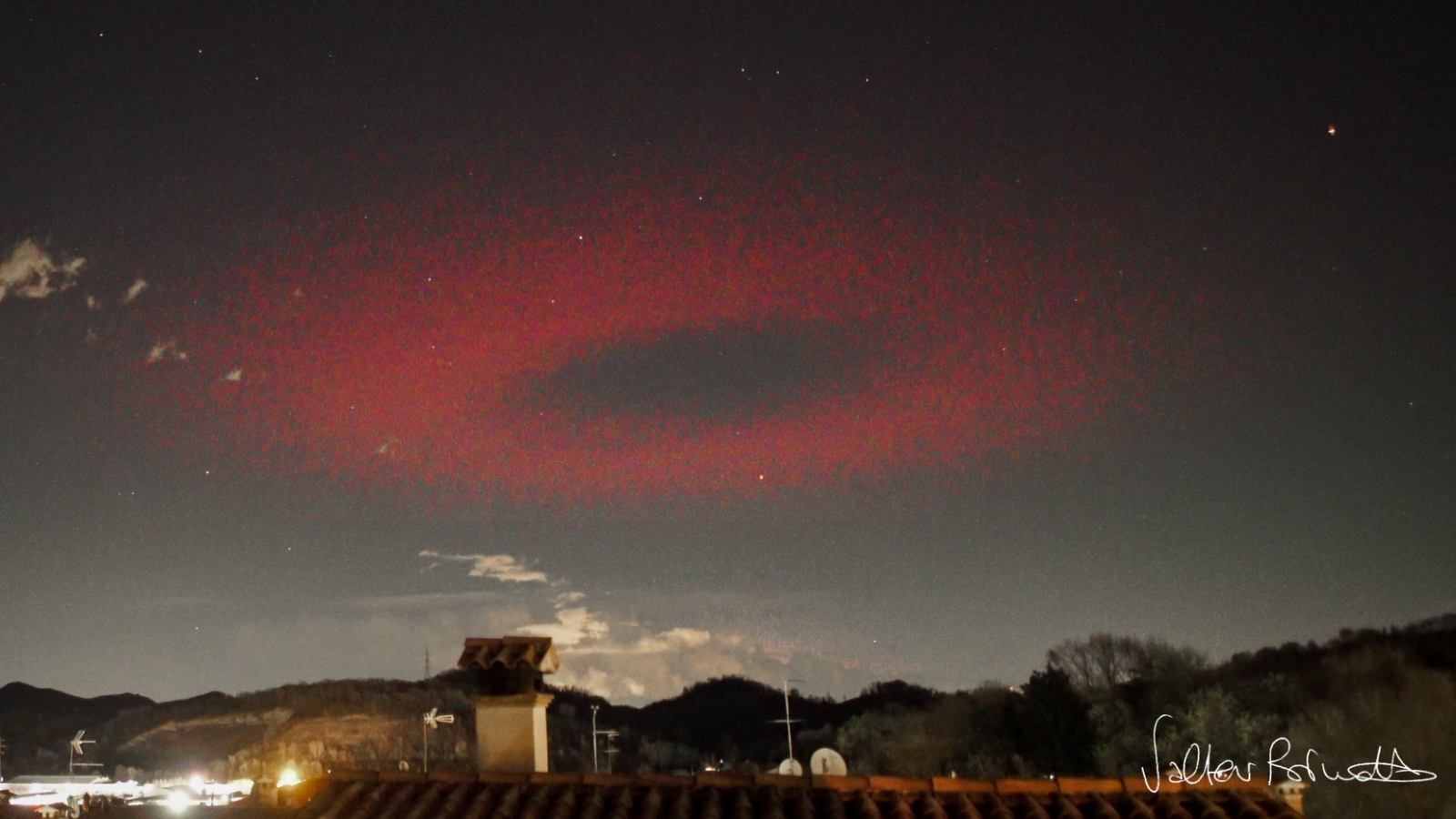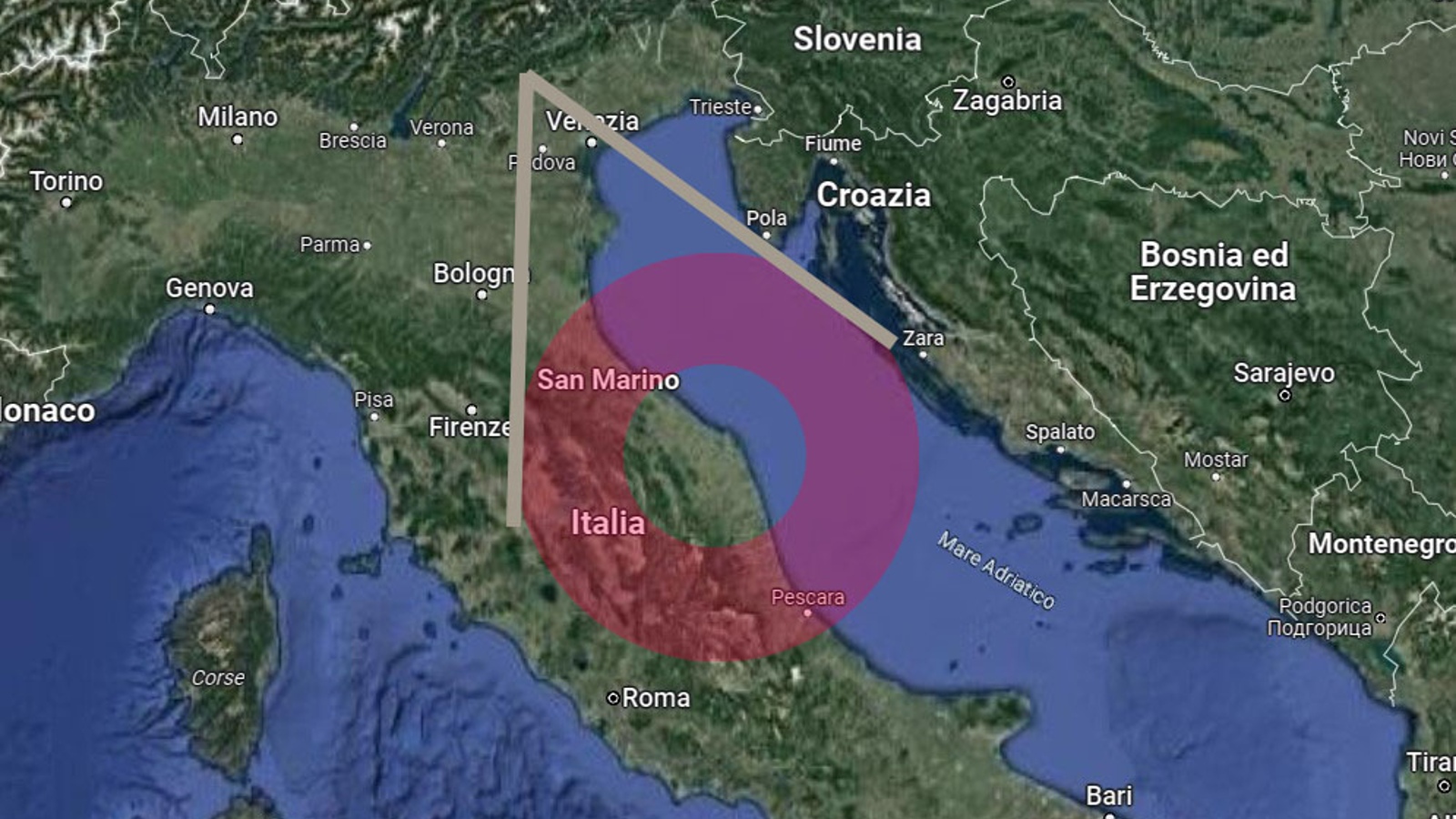Eerie ring of red light flashes like a massive UFO above Italy. What was it?
An enormous red halo of light flashed in the night sky above Italy before disappearing within milliseconds. It was likely caused by an electromagnetic pulse from a nearby thunderstorm.

An enormous, circular halo of eerie red light, which looks like something straight out of a sci-fi movie, recently flashed in the night sky above Italy. The bizarre disk appeared and disappeared within milliseconds, meaning most people likely missed the strange spectacle.
But one person, nature photographer Valter Binotto, managed to capture a shot of the luminous halo in the sky above the town of Possagno in northern Italy on March 27. However, the red ring was not actually located above the town. Instead, the massive circle, which was around 224 miles (360 kilometers) in diameter, blinked above central Italy and part of the Adriatic Sea. It was only a forced perspective that made the ring look as if it were hanging above the town.
The ring flash is known as an "emission of light and very low-frequency perturbations due to electromagnetic pulse sources," or ELVE for short, according to Spaceweather.com. ELVEs are a rare type of stratospheric/mesospheric perturbations resulting from intense thunderstorm electrification (SPRITE). The red rings are created when electromagnetic pulses (EMPs) given off by lightning hit Earth's ionosphere, the ionized part of the upper atmosphere that stretches between 50 and 400 miles (80 and 644 km) above the ground.
Related: Bright green laser lines shoot across night sky in Hawaii. What caused them?

Due to their short-lived nature, ELVEs are normally visible only to satellites orbiting Earth and were discovered just in 1990 thanks to cameras onboard NASA's space shuttles. Binotto's new image is likely "the best ever picture of one from the ground," according to Spaceweather.com.
Binotto believes that the ELVE was produced by an EMP generated from a large thunderstorm near Ancona, a city around 174 miles (280 km) southeast of Possagno. Normally, lightning bolts do not emit EMPs because they do not carry enough current. But during this storm, an unusually powerful bolt, at least 10 times more powerful than regular lightning bolts, likely generated the electrical shockwave, which then hit the ionosphere, according to Spaceweather.com. When electrons from within the EMP hit the ionosphere, the charged particles excite nitrogen atoms which then give off the reddish glow.
Binotto has photographed hundreds of ELVEs and other types of transient luminous events (TLEs) since he began shooting them in 2019, and this is "one of the biggest structures" he has ever seen, he told Spaceweather.com.
Sign up for the Live Science daily newsletter now
Get the world’s most fascinating discoveries delivered straight to your inbox.
This is not the first time SPRITEs like this have been photographed from Earth. In February 2021, a red sprite in Hawaii was photographed alongside blue jets, which are lightning bolts that shoot upward instead of downward. And in April 2013, red sprites were photographed above multiple bolts of lightning in Nebraska.

Harry is a U.K.-based senior staff writer at Live Science. He studied marine biology at the University of Exeter before training to become a journalist. He covers a wide range of topics including space exploration, planetary science, space weather, climate change, animal behavior and paleontology. His recent work on the solar maximum won "best space submission" at the 2024 Aerospace Media Awards and was shortlisted in the "top scoop" category at the NCTJ Awards for Excellence in 2023. He also writes Live Science's weekly Earth from space series.









